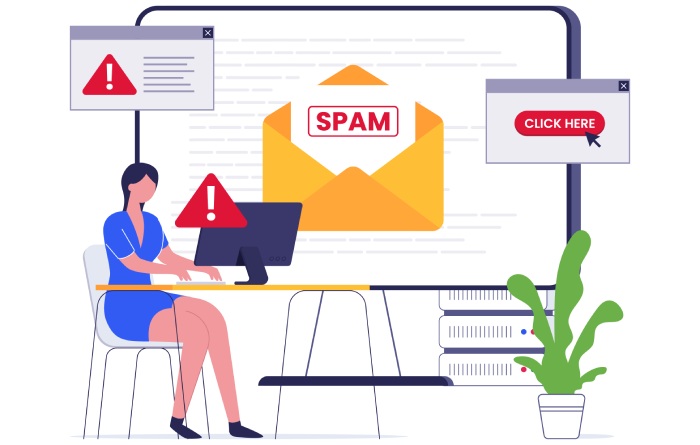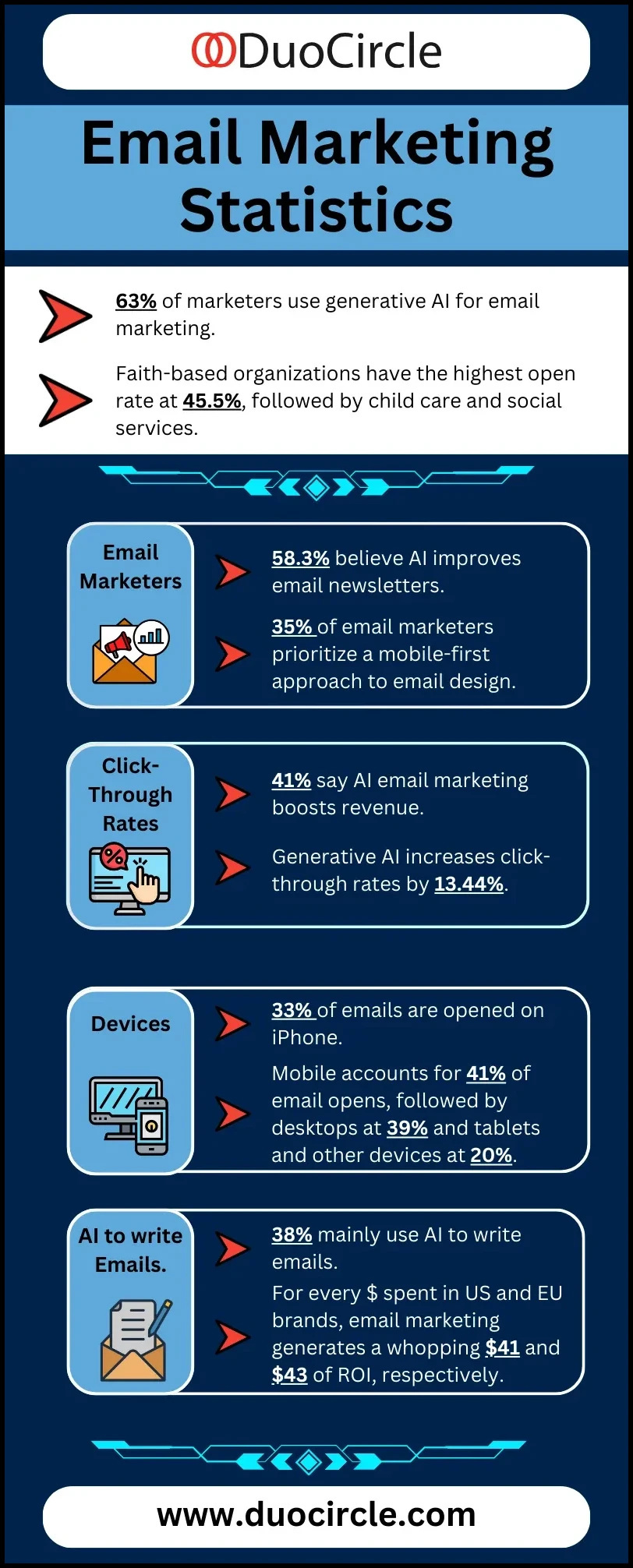When sending large volumes of emails to your customers, or potential customers, you want to be as sure as possible that those emails reach their intended targets.
Due to the amount of pesky spam mail that gets sent today, the major email service providers such as Google Mail, Microsoft Outlook, and Yahoo all keep a vigilant eye out to head off this menace.
And it’s no wonder. The sheer volume of spam is quite breathtaking.
Take July 2021 for example. In this month there were over 336 billion emails sent. A staggering amount, I’m sure you’ll agree. However, the same report shows how over 282 billion spam emails were also sent in this same time period.
With that volume of spam being sent, you can see why the email service providers try to halt it.
Also, many organizations today use spam filtering to ensure unwanted messages don’t get through.
This can lead to many messages that don’t necessarily fit in the spam category being shut out.
This poses a major problem for those launching email marketing campaigns, as the last thing you need is your beautifully crafted missive ending up in the spam folder.
To ensure this is not the case, the importance of having an IP address with a good reputation cannot be overstated.
While you may already have a small business cloud phone system that incorporates all of your messaging, if you plan on sending volumes of emails to your customers, it’s vital that you warm up your IP address to ensure those emails get there.
Before we explore some methods to warm up your IP address for email marketing, let’s first take a look at what IP warming actually is.
What is IP warming
Internet Service Providers (ISPs) use an IP address to identify the sender. They monitor the behavior and allot a reputation score to that IP address.
The better that reputation score, the more likely a message from it will reach its intended target.
As reputation is built through use, any new IP address will not yet have a reputation score. It is therefore considered ‘cold.’
If large volumes of mail are sent from this ‘cold’ address, they will likely be treated as spam due to the address’s lack of reputation.
Therefore, before sending large volumes of email from an IP address, it is important first to warm it up.
So, without further ado, let’s take a look at how you can do this.
How to strategize IP warming for email marketing
Fortunately, there are strategies that you can deploy to take that cold IP address and warm it up.
By putting these methods into practice, you’ll be able to warm up your IP address and get those email marketing campaigns firing on all cylinders.
Start cautiously
It cannot be stated how important it is to begin your IP warming strategy cautiously. If you show impatience and send too much mail from your IP address too early, the reputation of that address can be destroyed before it’s been built!
Keep a close eye on your volumes here.
Having your contact centers on the cloud will help your agents provide a positive customer experience, and give your supervisors’ full visibility of client interactions, including the number of emails sent from a specific IP address.
Automate your IP warm-up schedule
Automating your IP warm-up schedule removes any possibility of human error from the process.
If one of your operators accidentally exceeds send limits, that can be your whole strategy down the pan.
With automation, you don’t need to worry about this, as the number of emails sent daily will be set to fulfill a quota and will not exceed the desired amount.
Automation is easy to implement and takes the worry out of things. Make sure you do this.
Authenticate your emails
Ensuring that your authentication records are up to standard is vital to your IP warming strategy.
Email authentication is performed by email service providers to establish whether the incoming email is fraudulent or not. To do this, they check whether the sender matches the records of the server, it’s sent from.
Therefore, you need to set up your email protocols to ensure that the service provider can establish who you are.
Without authentication, your email can look dubious.
Keep a separate IP address for transactional email
Transaction emails typically include messages containing purchase details, order confirmations, business contact information, and calls to action.
ISPs view these types of emails as always ‘wanted’ by the recipient and are therefore treated differently to marketing emails.
Using the same address for both transactional and marketing emails can result in the email service provider’s filtering systems classifying it all as spam.
Therefore, it’s a good idea to separate these from your marketing emails by keeping separate IP addresses for each.
Use your data
ISPs like senders that are responsive to their recipients.
Therefore, the more data you have on those recipients, the more responsive you can be.
By collating your data, you can establish which emails get the best responses from your recipients and target your future emails accordingly.
Data can be used to tweak your strategy and improve overall results by helping to eliminate spam complaints and lower bounce rates.
Having good Java microservices architecture will help integrate all your data sources.
Get feedback from mailbox providers
Make sure to register with each email service provider’s feedback resources.
By hooking into these feedback loops, you will receive messages related to spam complaints and other such information that can assist you in tweaking your strategy to avoid these in the future.
By receiving these messages, you can remove all complainants from your mailing list. As a result, delivery rates will be increased immediately.
Get a dedicated IP address
Having a dedicated IP address will offer you total control over your sender reputation.
This is down to you having overall responsibility for all of your deliverability. Therefore, your sender reputation is directly influenced by your performance in this area.
ISPs are wary of addresses pumping out high volumes of emails. Having a dedicated, rather than a shared, IP address will allow you to build a better reputation with the ISP as you have total control of your email output.
This is vital when warming an IP address.
Compartmentalize your customers
Compartmentalizing your customers will lead to higher engagement rates among your customer base, thus helping greatly with your IP warming strategy.
For example, increasing the frequency of emails to your most responsive customers while decreasing them to those less engaged will help warm up that IP address nicely.
This also has the much-desired outcome of helping to stop email bounceback.
A good Simple Mail Transfer Protocol (SMTP) service can save you a lot of heartache in this respect by delivering your email to your client without it being filtered or sent to spam.
Conclusion
In 2021, it was estimated that over 319 billion emails were sent worldwide daily. This is set to increase to over 376 billion by 2025 according to the same survey.
It goes without saying that emails are a vital part of any modern marketing strategy. As we’ve explored, ensuring these emails reach the intended recipients is crucial to any marketing campaign.
The biggest takeaway from this post is to use best practices. Personalize your emails, monitor user engagement, and remove unresponsive recipients.
And make sure your content is worth clicking on, otherwise, no one will want to open it!
Doing this allows you to warm up that IP address without any headaches.
Now, time to implement your IP warming strategy.
Bio:
Grace Lau – Director of Growth Content, Dialpad
Grace Lau is the Director of Growth Content at Dialpad, an AI-powered cloud communication platform for better and easier team collaboration that offers features like virtual business fax by Dialpad. She has over 10 years of experience in content writing and strategy. Currently, she is responsible for leading branded and editorial content strategies, partnering with SEO and Ops teams to build and nurture content. Grace Lau also published articles for domains such as Causeartist and DivvyHQ. Here is her LinkedIn.



